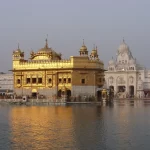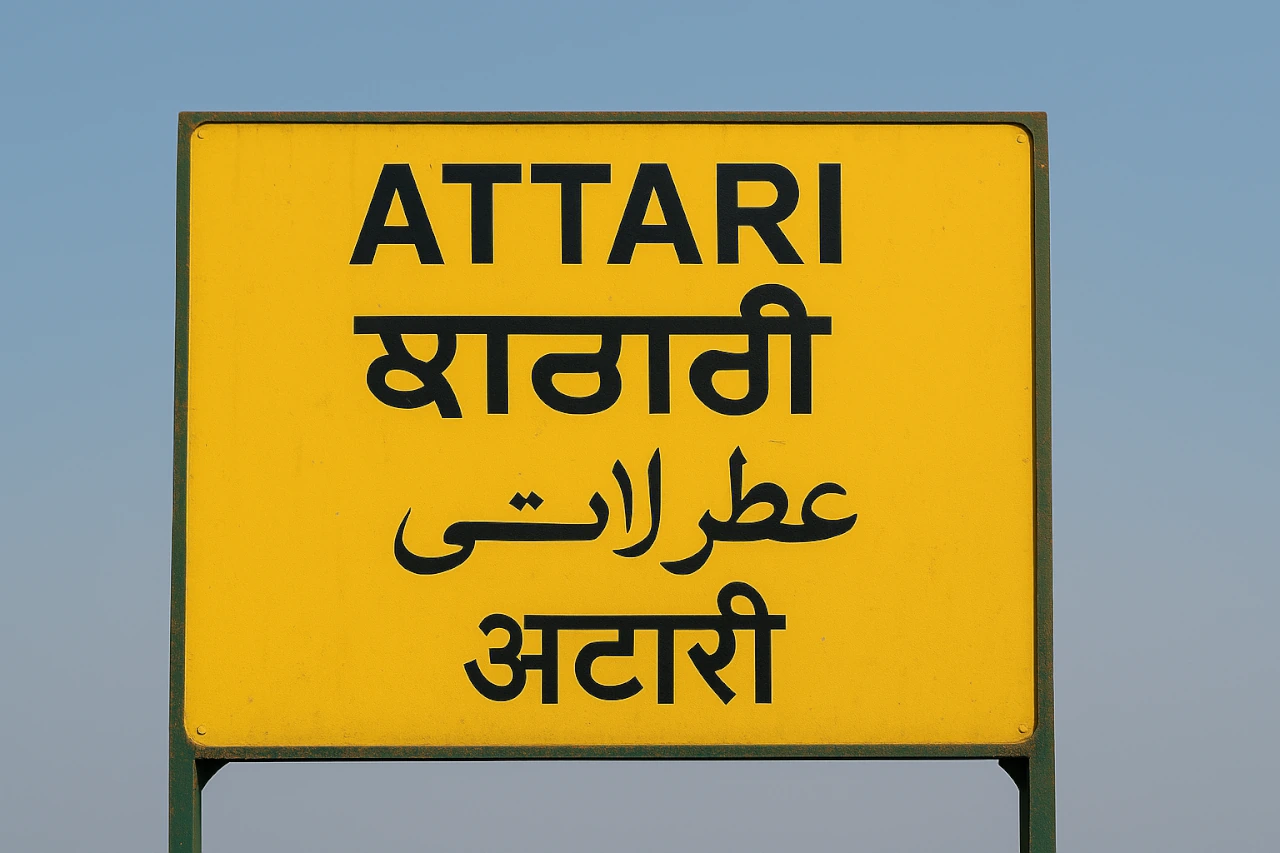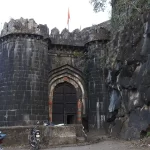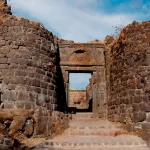Attari Sham Singh Railway Station: Where History Meets the Horizon
Step into a portal of Punjab’s past, present, and cross-border Aspirations.
🔴 Introduction
Nestled in the heart of Punjab’s Amritsar district, the Attari Sham Singh Railway Station isn’t just a transit hub—it’s a living chronicle of India’s partition, valiant Sikh history, and geopolitical narratives. Renamed in 2015 to honour General Sham Singh Atariwala, a legendary Sikh warrior, this station stands as India’s final rail outpost before the Wagah border with Pakistan. With its Indo-Islamic arches and Victorian-era platforms, the station whispers tales of colonial railroads, Partition-era sorrows, and hopes for a connected Asia via the Trans-Asian Railway.
In this deep dive, we’ll unravel its layered history, architectural grandeur, and practical travel insights. Whether you’re a history buff, architecture enthusiast, or a traveler seeking unique destinations, Attari Sham Singh offers a journey through time and terrain.
🟢 Detailed Introduction:
Attari Sham Singh Railway Station, Amritsar District, Punjab
🔘 Historical Legacy and Renaming
Attari Sham Singh Railway Station, situated in Punjab’s Amritsar district, is a symbol of India’s colonial past and Sikh valour. Originally named Attari Railway Station, it was renamed in 2015 to honour General Sham Singh Atariwala, a legendary Sikh commander who fought bravely in the First Anglo-Sikh War (1845–46). The station’s history dates to 1862 when the British completed the Amritsar–Attari section of the Lahore–Amritsar line, a critical link in their colonial railway network. Today, it stands as India’s last rail outpost before the Wagah border with Pakistan, a mere 3 km away.
🔘 Architectural and Strategic Significance
The station’s design blends Indo-Islamic arches with Victorian-era brickwork, reflecting Punjab’s syncretic heritage. Elevated at 231.52 meters (759.6 ft), it is assigned the code ATT and features three platforms and four tracks. Its strategic importance is underscored by its role in the Trans-Asian Railway (TAR), a proposed freight corridor connecting Asia to Europe. The TAR’s Southern Corridor aims to enter Pakistan via Attari, though a 315 km missing link in the India-Myanmar sector delays this vision.
🔘 Partition and Cross-Border Connectivity
During the 1947 Partition, Attari became a poignant site for refugee trains carrying displaced families. The Samjhauta Express, which once ran between Delhi and Lahore (suspended in 2019), required passengers to carry passports—a rare rule for an Indian station. The station also serves as a gateway for trade, with the Integrated Check Post (ICP) facilitating 500+ trucks daily since 2012, boosting Indo-Pak commerce.
🔘 Cultural and Political Role
Administratively, Attari is a sub-tehsil under Amritsar district and part of the Attari Assembly Constituency. The station’s proximity to the Wagah border ceremony—a daily display of synchronised drills by Indian and Pakistani forces—makes it a hub for patriotic tourism.
Also Read
Amritsar, Punjab- A Timeless Tapestry of Spirituality, History, and Cultural Grandeur
🔘 Granular Historical Timeline
✦ 1740: Attari village founded by Sidhu Jat brothers Gaur Singh and Kaur Singh.
✦ 1846: Sham Singh Atariwala martyred at the Battle of Sabhraon.
✦ 1862: Amritsar–Attari railway section completed under British rule.
✦ 2012: ICP inaugurated, enhancing cross-border trade.
🔘 Architectural Layout
The station’s ground-level exit/entrance leads to a functional ticket counter, while platforms 1–3 accommodate major trains like the Amritsar–Attari DEMU and Jabalpur–Attari Special. A locked gate at the station’s western end symbolises the severed India-Pakistan rail link.
🔘 Modernisation and Challenges
Despite its heritage, the station faces challenges like limited amenities and electrification delays. Restoration efforts, highlighted in documentaries like Attari Junction, emphasise preserving its fading colonial charm.
🔘 Future Prospects
As part of the TAR, Attari could transform into a global freight hub. However, pending rail links in Manipur (e.g., Jiribam–Tupul stretch) hinder progress.
Exploring Attari Sham Singh Railway Station History
🟣 Section-by-Section Breakdown
⛔ Historical Tapestry: From Sikh Valour to British Rails
👉 Origins: Built in 1862 as part of the Lahore-Amritsar line, the station initially served British colonial interests.
👉 Renaming: In 2015, Punjab’s government rebranded it to honour Sham Singh Atariwala, a Sikh general who died resisting British forces in 1846.
👉 Partition Trauma: During Partition, “ghost trains” carrying refugees’ bodies passed through Attari, marking it as a site of collective memory.
👉 Samjhauta Express: Until 2019, this “Peace Train” linked Delhi to Lahore, requiring passengers to carry passports—a rare rule for an Indian station.
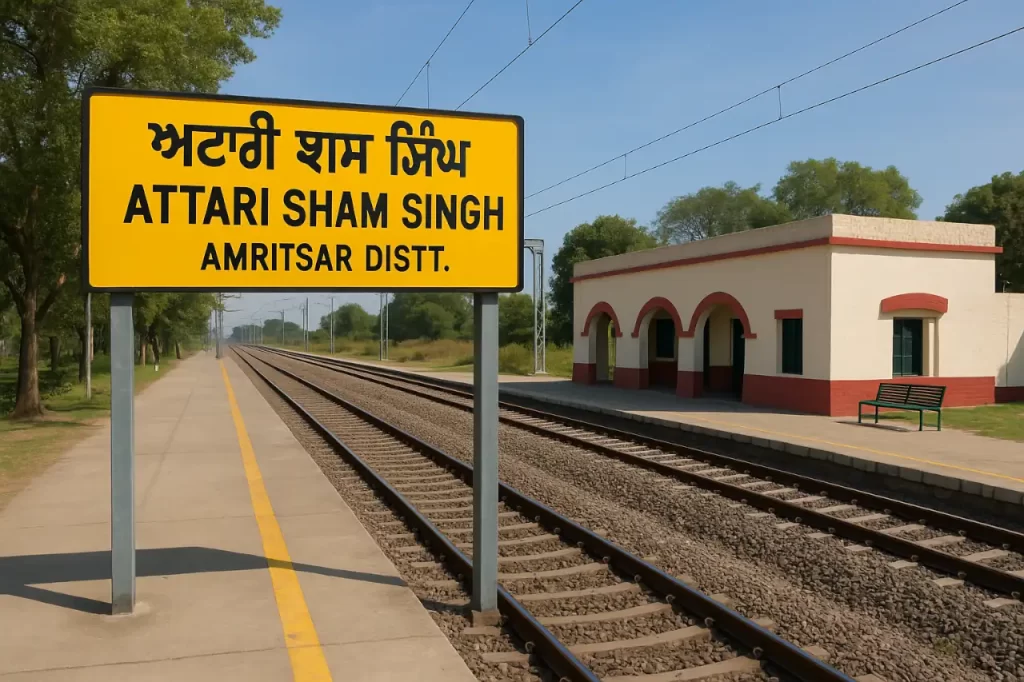
⛔ Architectural Grandeur: Blending Styles, Echoing Eras
👉 Design Fusion: The station combines Indo-Islamic arches with Victorian brickwork, reflecting Punjab’s syncretic culture.
👉 Layout: Ground-level platforms, a functional ticket counter, and a locked gate symbolising the severed India-Pakistan link.
👉 Restoration Efforts: Documentaries like Attari Junction highlight its fading elegance, urging heritage conservation.
⛔ Strategic Connectivity: Trans-Asian Railway & Beyond
👉 Global Vision: Part of the Trans-Asian Railway’s Southern Corridor, Attari is poised to link Europe via Turkey, bypassing sea routes.
👉 Missing Links: A 315-km gap in India-Myanmar tracks delays this vision, with ongoing work in Manipur’s Jiribam-Tupul stretch.
⛔ Distance from Major Indian Cities
| City | Distance (km) | Travel Time (Train/Road) |
| Amritsar | 35 km | 40 min (Road) |
| New Delhi | 472 km | 6h 35m (Train) |
| Kolkata | 1,780 km | 34 hrs (Train) |
| Mumbai | 1,850 km | 32 hrs (Train) |
Note: Distance is approximate and travel time may vary. Please check with google maps or local authorities before travelling.
Travel Guide: Unlocking Attari’s Secrets
➨ How to Reach
✦ By Train: Direct trains like the Amritsar-Attari DEMU connect from major hubs.
✦ By Air: Fly to Amritsar’s Sri Guru Ram Dass Jee Airport (30 km away).
✦ By Road: NH1 (Grand Trunk Road) offers scenic drives from Delhi (6h 28m).
➨ Best Time to Visit
✦ October–March: Pleasant weather (10°C – 25°C) ideal for border ceremonies and heritage walks.
✦ Monsoon (July–September): Lush fields but humid; carry rain gear.
➨ Nearby Attractions
✦ Wagah Border Ceremony: Daily flag-lowering ritual (3 km away).
✦ Golden Temple: Sikhism’s holiest site (25 km).
✦ Jallianwala Bagh: Historic memorial (26 km).
➨ Local Markets & Cuisine
✦ Attari Bazaar: Spices, Phulkari embroidery, and Punjabi juttis.
✦ Must-Try Dishes: Amritsari Kulcha, Lassi, and Sarson Ka Saag.
⛔ Cultural Deep Dive: Demographics & Economy
✦ Talukas: Attari is a sub-tehsil under Amritsar district, comprising 45 villages.
✦ Languages: Punjabi (primary), Hindi, and Urdu.
✦ Economy: Cross-border trade via the Integrated Check Post (500+ trucks/day).
“Plan your visit to this historic landmark and experience Punjab’s living history. Share your journey with #AttariShamSingh!”
🟠 Best Places for Refreshments: Authentic Local Food
🍽 Kesar Da Dhaba (Amritsar)
👉 Specialty: Century-old recipes like Dal Makhani and Phirni (Saffron Rice Pudding) cooked in pure Desi Ghee.
👉 Experience: Kitchen tours on request; communal seating with locals.
🍽 Bhai Kulwant Singh Kulchian Wale
👉 Must-Try: Amritsari Kulcha (Stuffed with Spiced Potatoes) served with Chickpea Curry and Tangy Chutney.
🍽 Brother’s Dhaba
👉 Highlight: Creamy Lassi in clay pots, topped with Malai (Clotted Cream).
🍽 Makhan Chicken and Fish Corner
👉 Signature Dish: Mutton Masala paired with Tandoori Roti; popular for late-night non-vegetarian cravings.
🍽 Langar at Golden Temple
👉 Unique Aspect: Free communal meal serving 100,000+ daily; concludes with Kada Prasad (Sweet Semolina Dessert).
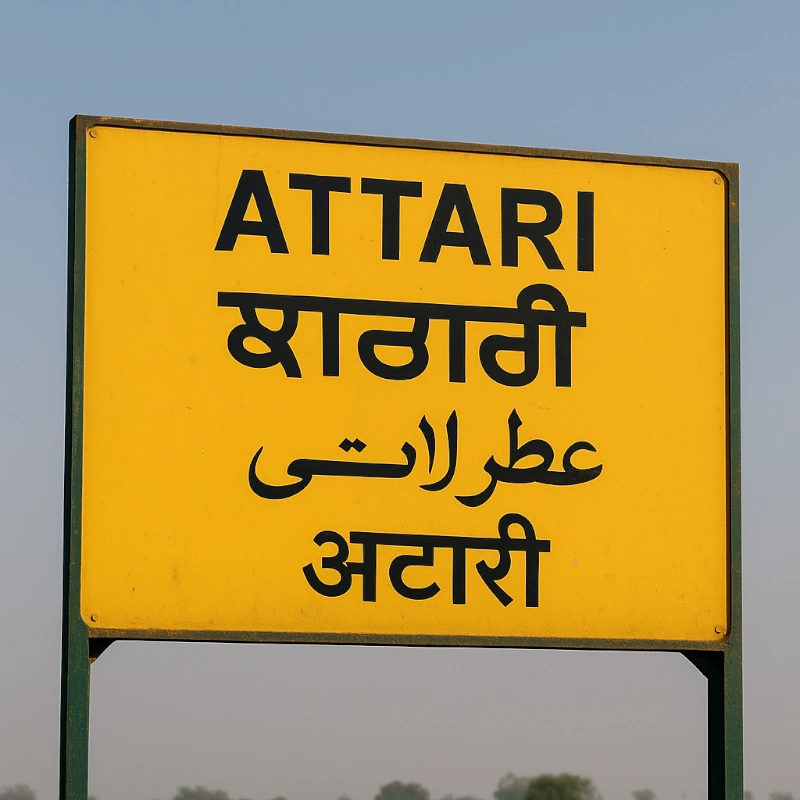
🟤 Best Places to Visit with Granular Details (with Granular Details)
🎯 Golden Temple (Harmandir Sahib)
✦ Architecture: Gold-plated sanctum surrounded by the Amrit Sarovar (holy Tank).
✦ Timings: Open 24/7; Visit Early Mornings (5–8 AM) for serene visits.
🎯 Wagah-Attari Border Ceremony
✦ Experience: Daily flag-lowering ritual with patriotic chants; arrive early for front-row seats.
🎯 Jallianwala Bagh
✦ Historical Insight: Bullet marks and a memorial well commemorate the 1919 massacre.
🎯 Partition Museum
✦ Exhibits: Personal artefacts, oral histories, and artworks depicting Partition trauma.
🎯 Gobindgarh Fort
✦ Attractions: 4D shows on Maharaja Ranjit Singh’s reign; replica of the Koh-i-Noor diamond.
🔵 Where to Stay: Accommodation Options
✅︎ Welcomhotel by ITC Hotels (Raja Sansi)
✦ Proximity: 15-minute drive to Golden Temple; spa, pool, and Punjabi cuisine at Welcomcafe Phulkari.
✅︎ Ramada Encore by Wyndham (Airport Road)
✦ Amenities: Free shuttle service, rooftop dining at Basil restaurant.
✅︎ SureStay by Best Western (Model Town)
✦ Budget-Friendly: Near Amritsar Junction; includes breakfast and airport transfers.
✅︎ Le Meridien Amritsar
✦ Luxury: Panoramic city views, outdoor pool, and proximity to Wagah border.
Note: Hotel rates are subject to change and may vary based on factors like seasonality, availability, and promotions. Taxes, service charges, and other applicable fees are not always included in displayed rates.
🟡 Notable People from Amritsar District
★ Sham Singh Atariwala – Contribution: Sikh general martyred in the First Anglo-Sikh War; symbol of resistance.
★ Navjot Singh Sidhu – Background: Former Indian Cricketer, Television Personality and Politician from the Indian National Congress.
★ Kiran Bedi – Achievement: India’s first female IPS officer; later Lieutenant Governor of Puducherry.
★ Kapil Sharma – Work: Comedian and TV host; rose from Amritsar’s middle-class roots to national fame.
★ Lakhwinder Wadali – Legacy: Renowned Sufi musician from the Wadali Brothers duo; preserves Punjabi folk traditions.
★ Sam Manekshaw – Military Role: Field Marshal who led India to victory in the 1971 Indo-Pak War.
★ Maharaja Ranjit Singh – Historical Impact: Sikh Empire founder who fortified Amritsar and rebuilt the Golden Temple.
★ Sardar Nihal Singh – Rebel leader against Maharaja Ranjit Singh.
This comprehensive guide synthesises history, culture, and practical travel insights, ensuring a rich exploration of Attari Sham Singh Railway Station and its surroundings. For further details, refer to the cited sources.
➤ FAQs
Do I need a passport to visit Attari Station?
Not anymore! The rule was revoked after Samjhauta Express’s suspension in 2019.
Can I take a train to Pakistan from here?
Currently, no passenger trains operate cross-border, but freight plans are underway.
➤ Conclusion
Attari Sham Singh Railway Station is more than bricks and tracks—it’s a metaphor for unity, resilience, and undying heritage. From Sham Singh’s valour to Wagah’s beating retreat, every corner here tells a story. As Punjab’s cultural sentinel, it invites travellers to witness history in motion.
➤ Sources:
Wikipedia – Attari Sham Singh Railway Station
Times of India
Khalsa Vox
Amrit Mahotsav
For more information, you can visit our website: ExploreXP
Plan Your Trip Today! Explore Punjab’s heartbeat—where every train whistle echoes a bygone era. 🌅🚂
- Aranya Devi Temple – Arrah, Bihar: Where Mythology Meets Modern Devotion

- Anjaneri Hill – Nashik, Maharashtra: Where Myth Meets Majesty
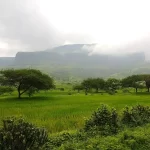
- Anand Sagar, Shegaon, Maharashtra – A Spiritual Oasis Blending Serenity & Adventure
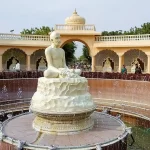
- Aga Khan Palace – Pune’s Monument of Freedom and Legacy
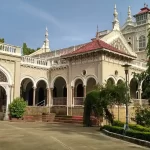
- Attari Sham Singh Railway Station – A Historic Gateway to Punjab’s Heritage

- Amritsar, Punjab: A Timeless Tapestry of Spirituality, History, and Cultural Grandeur
